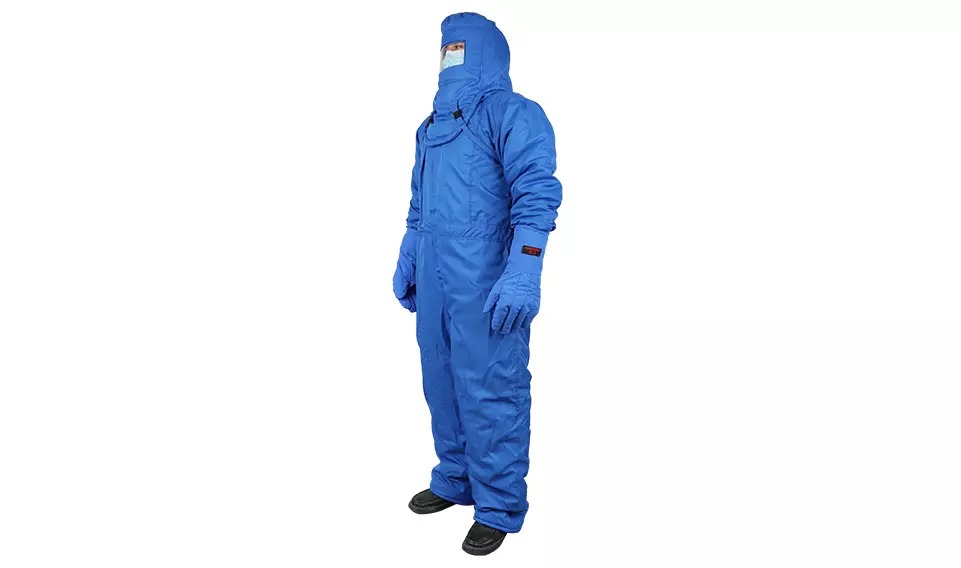
What are the advantages and disadvantages of liquid nitrogen protective clothing?
As protective equipment specially used for low-temperature environments such as liquid nitrogen, liquid nitrogen protective clothing has a series of significant advantages, but it also has some potential disadvantages. The following is a detailed analysis of its advantages and disadvantages:
AdvantagesExcellent low-temperature resistance:Liquid nitrogen protective clothing can effectively resist extremely low temperatures, usually from -150℃ to -280℃, ensuring the safety of workers under extreme low-temperature conditions.
This feature makes liquid nitrogen protective clothing irreplaceable in the treatment of low-temperature media such as liquid nitrogen, liquid ammonia, and natural gas.
Multi-layer composite material:Made of multi-layer composite material, usually including two thin layers of insulating material and an inner layer of high thermal insulation material, the thermal insulation performance and protective effect are improved through the design of multi-layer structure.
Good comfort and flexibility:Protective clothing is usually designed to be light, soft and durable, comfortable to wear and will not limit the range of activities of workers.
Some liquid nitrogen protective clothing is also equipped with a gold anti-fog and anti-impact face shield, providing a wide field of view and a good wearing experience.
Waterproof and anti-static performance:It has excellent waterproof performance and can effectively resist the splash of cryogenic liquids.
At the same time, the anti-static performance is stable, ensuring safe operation in low-temperature environments.
Wide range of application:Liquid nitrogen protective clothing is not only suitable for the treatment process of cryogenic media such as liquid nitrogen and liquid ammonia, but also widely used in laboratories, aerospace engineering, low-temperature storage environments, and freezers.
DisadvantagesHigh cost:Since liquid nitrogen protective clothing is made of multi-layer composite materials and precise manufacturing processes, its cost is relatively high.
This may cause a certain economic burden on some small businesses or individual users.
Strict maintenance requirements:Liquid nitrogen protective clothing needs to be properly stored and maintained to ensure the stability and service life of its performance.
This includes storing the protective clothing in a ventilated, mildew-proof, moth-proof, dry place, and avoiding it with acids, alkalis, oils and corrosive items.
It is cumbersome to put on and take off:Since liquid nitrogen protective clothing has a multi-layer structure and a variety of protective components (such as hoods, tops, pants, gloves, etc.), it may take a certain amount of time and skills to put it on and take it off.
This may affect the emergency response speed of staff in some emergency situations.
Relatively poor breathability: Although liquid nitrogen protective clothing performs well in terms of warmth retention, its breathability may be relatively poor. When worn for a long time, workers may feel stuffy and uncomfortable. In summary, liquid nitrogen protective clothing has significant advantages in terms of low temperature resistance, comfort and flexibility, but it also has disadvantages such as high cost, strict maintenance requirements, cumbersome wearing and relatively poor breathability. When selecting and using liquid nitrogen protective clothing, these factors need to be considered comprehensively to ensure the safety and comfort of workers.












